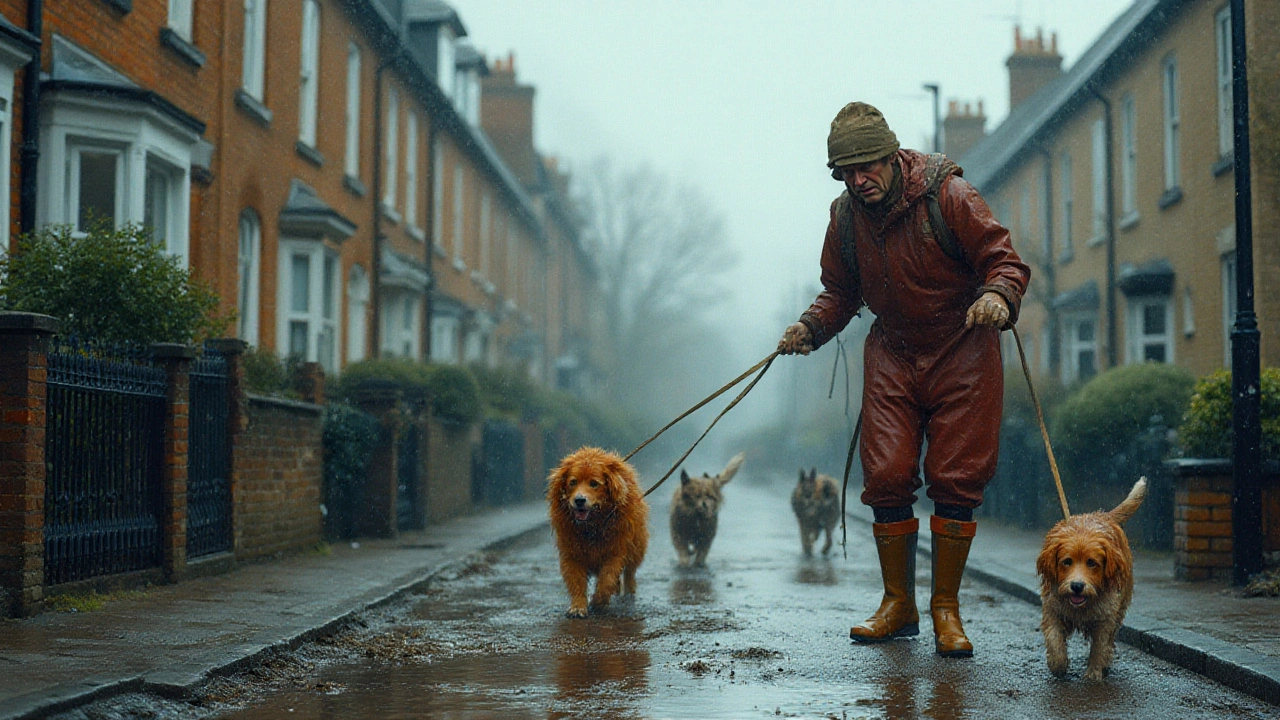Dog Walking Injuries – Spot Them Early, Keep Your Pup Safe
Taking your dog out for a stroll should be fun, not a trip to the vet. Yet slips, cuts, and aches happen more often than you think. Knowing the usual suspects and how to stop them can save you time, money and worry.
Common Injuries You’ll See on Walks
Most owners run into four problems: bruised paws from hot pavement, torn nails on rocky trails, muscle strains from sudden pulls, and minor bites from other dogs. A hot sidewalk can burn a paw in seconds, especially in summer. Rough ground often chips nail beds, leaving a painful sore that looks like a small spot of blood. If your dog darts after a squirrel, the sudden change in direction can strain the shoulder or back. And a quick nip from a neighboring dog can leave a puncture wound that looks worse than it feels.
Quick First‑Aid Tips for On‑The‑Spot Care
Carry a small kit: gauze, a mild antiseptic wipe, tweezers, and a lightweight bandage. For a burnt paw, rinse with cool water for a minute, then pat dry and apply a thin layer of pet‑safe ointment. A torn nail gets a gentle trim with dog nail scissors; if the nail bed is exposed, clean with the wipe and cover lightly to keep dirt out. Muscle strains need rest – stop the walk, let your dog lie down, and apply a cold pack wrapped in a cloth for ten minutes. Small bite wounds get the same wash, then a light bandage; watch for swelling or redness, which means a vet visit is needed.
Prevention is easier than treatment. Choose routes with shade in summer and smooth surfaces in winter. Check the ground for hidden glass, thorns or sharp rocks before you start. Use a well‑fitted harness instead of a collar; it spreads pull pressure across the chest and reduces neck strain. Keep your dog’s nails trimmed to a length that just touches the ground – shorter nails are less likely to catch on something.
If you often walk busy streets, a reflective vest makes both you and your dog more visible to drivers. For dogs that love to chase, a short leash gives you control without choking them. And always bring water on longer walks; dehydration can lead to cramps and fatigue, increasing injury risk.
When an injury looks serious – heavy bleeding, a broken bone (limp that won’t improve), or a wound that won’t stop swelling – call your vet right away. Even a tiny puncture can get infected fast, so a quick professional check can avoid a bigger problem later.
Our blog has more on staying safe while walking. The article “Are Dog Walkers a Good Idea?” explains how professional walkers keep pups injury‑free, and “Dog Training Collars: What the Pros Recommend” helps you pick gear that won’t hurt. Bookmark these posts for extra peace of mind.
Take a few minutes to audit your walking routine. Swap out risky paths, refresh your kit, and practice on‑the‑spot care with your dog at home. A little preparation turns a regular walk into a safe adventure for both of you.

Dog Walking Drawbacks: Risks, Realities, and Hidden Downsides
Dog walking isn’t all fresh air and wagging tails. Find out the true downsides, safety risks, and hidden costs, plus tips for making each walk safer and smoother.
View more